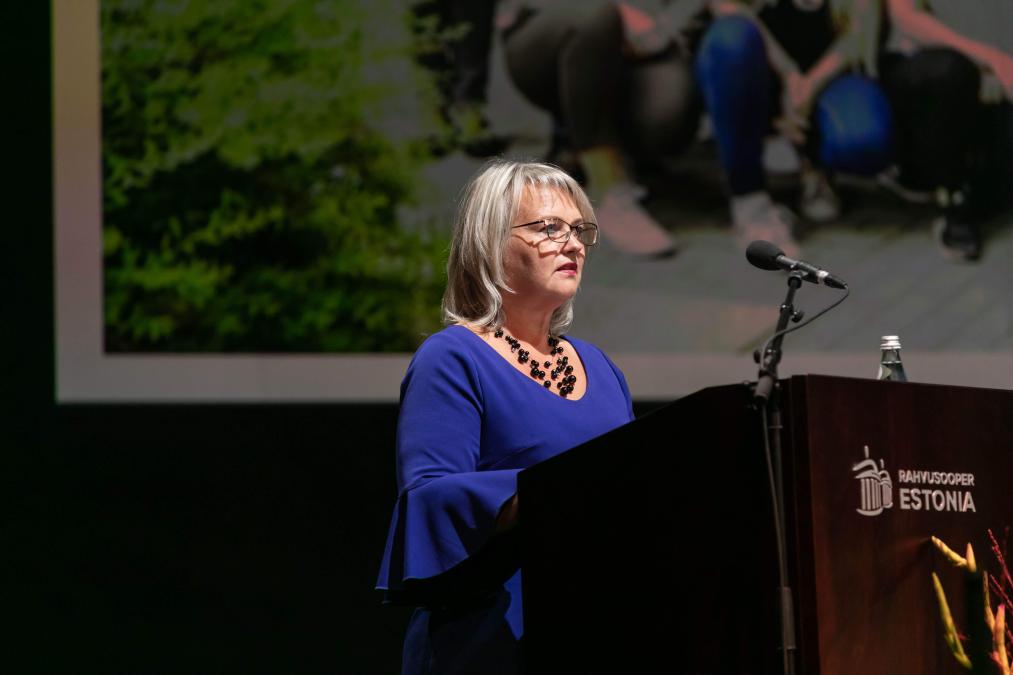Evelin Sarapuu is known in the Estonian early childhood education landscape as a thoughtful leader, a dedicated teacher and the chairwoman of the Estonian Association of Early Childhood Educators, who is not afraid of complex topics or controversial discussions. She is a person who speaks about education both at the system and heart level – honestly, clearly and directly.
In this interview, we talk about the changes that are affecting Estonian kindergartens today and tomorrow. We discuss different models of teacher work organization (e.g. 2+1 vs. 1+2 system), leadership changes and the quality of early childhood education. We also touch on the future: what could an Estonian kindergarten be like in 20 years, what support teachers need and how to approach technological developments, including the role of artificial intelligence in early childhood education.
This conversation is not just a retrospective or a mapping of the current state – it is an invitation to think about how we can together shape education that values the child, the teacher and the community. Evelin Sarapuu’s views are at the same time pragmatic and inspiring – exactly as a good advocate for education should be.
We met Evelin at the wonderful Nurmepesa Kindergarten.
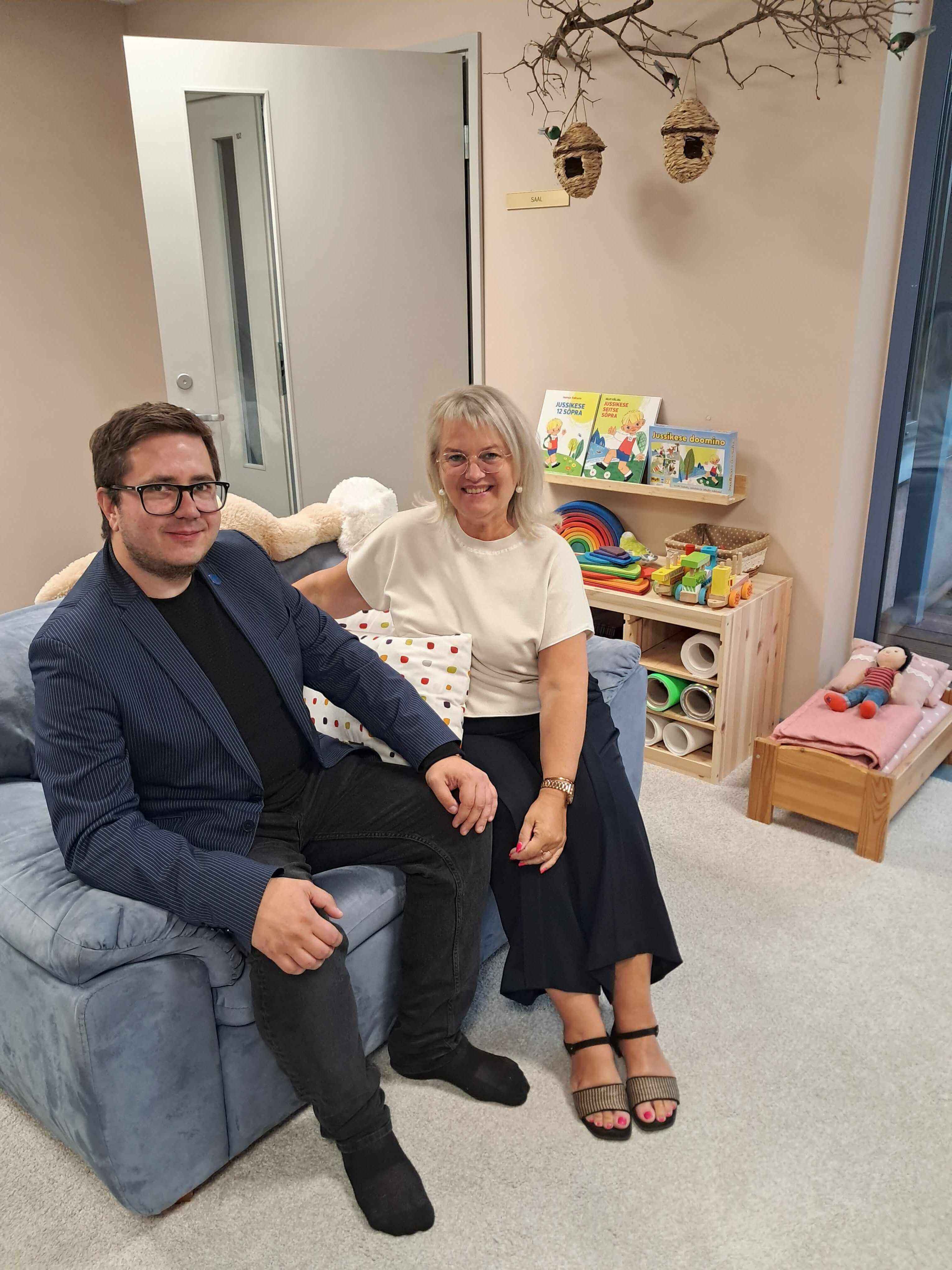
Evelin Saraupuu - Head teacher of Nurmepesa kindergarten and Rasmus Gross - CEO of ELIIS.
What makes Nurmepesa Kindergarten special?
The most important thing for us is that the child’s voice, interest and joy of action are truly visible. We have consciously chosen a path where child-centeredness is not just a buzzword, but a substantive approach that is reflected in everyday teaching and education. This means that we expect ideas from children, involve them in planning and analysis, and create conditions where their interests and needs can truly emerge.
We have had substantive discussions with teachers about what child-centeredness means to us. We have explained this concept in our curriculum and created tools that help teachers remember and apply these principles. In addition, we have also opened these values to parents and the board of trustees so that they can collectively understand why we do what we do.
How are play and learning connected in your kindergarten?
It is often mistakenly believed that play is just a pastime, but in fact play is where children learn most authentically. Three years ago, we started with conscious work to increase the value of play. We thought about what play is, how it supports a child's development, and how teachers can consciously support it.
It was also important to create conditions where children can create their own games. This means that we have play equipment that does not dictate the content of the game, but gives them the opportunity to create something completely new through imagination and creativity. Games that children plan, create, and conduct themselves take time - it often takes an hour or an hour and a half before the game gains depth and rhythm. That is why we have changed the daily schedule so that there are sufficiently long free play times.
The teacher's role is more supportive. We do not lead the game, but create the environment, offer "provocations" or materials and ideas when the moment is right. In addition, we observe the game, what is happening there, what skills and values are visible in the game, how it supports the child. This is a new role of the teacher: to be an observer who gives meaning to the game and interprets it pedagogically.
How do teachers achieve that learning takes place through play? Can all teachers create educational games themselves?
Ready-made toys are not universal and someone has already thought of how to use them for us. But if we think about our specific group and these children here and now, we need to find ways to support their development of, for example, reading or writing skills through play. This does not mean that the teacher has to come up with something big and complex every time. Educational games are often created together with the children, based on their needs and interests.
It is important to notice when a child is interested and ready. A child may not even know that writing even exists. Especially today, when everyone writes on a keyboard. The teacher can initiate, offer opportunities, set an example, and then step back, letting the child move forward at their own pace. That's why homemade games are so valuable. These games are born out of need and context, and that's why they're so important and unique.
How does learning to read happen in kindergarten? Are there any specific methods for this?
Learning to read does not work as a campaign. We do not hand out Karu's primers to everyone and do not collectively start from the third page. Children's development is very different, some four-year-olds are already reading, while others only open up at seven. And this is completely normal. The teacher's task is to notice when the child is ready, and then offer them activities that are suitable for that moment.
I understand the parents' desire for their child to learn to read, but it is important to remember that the role of kindergarten is to support the child's development - the responsibility for the child's development remains primarily with the family. In kindergarten, the child practices on a daily basis what they cannot learn alone at home: playing together and taking others into account, communicating with friends and resolving disagreements, following group agreements and participating in joint activities. These are skills that will help the child to cope well later in school and life, and are the main parts of school readiness. Some parents entrust all responsibility to the kindergarten, and the teacher who loves children quietly accepts it. But this can lead to burnout. We remind our teachers again and again: do your job thoroughly and let others do their part.
What would you say to those teachers who feel that they do not have enough creativity to come up with playful learning activities?
A very good question. Creativity is something that is often considered innate, that whoever has it, has it. But in fact, creativity is a skill that can be developed. Not everyone has to be a great inventor or a master game creator. You can start with small things: listening to children, noticing their interests and offering something simple that supports or directs their play.
I encourage teachers to ask colleagues for help, share ideas and use existing good practices for inspiration. And sometimes it is enough to simply be present in the children's play and notice what is happening, and then offer something that helps the play grow. Everyone finds their own way, but the courage to try is important.
Creativity is not something that you are born with or not. It is a mindset and a skill that can be developed. My experience shows that the most important thing is to trust the child. When a teacher lets the child act on their own, those connections and ideas that we often consider creative begin to emerge. In our kindergarten, we have seen that those teachers who give up excessive control and start noticing the child more quickly reach the point where meaningful learning grows out of play and interest.
It is important to create discussions among teachers and create a safe environment where you can experiment, make mistakes and learn. And just like children, adults also need time. Some teachers are sprinters, some take time to observe and reflect. Change cannot be imposed by order. This is a journey that we walk together. The experience of Nurmepesa kindergarten shows that the development of an educational institution is the effort of the entire team.
How do you support teacher development and working in subgroups in your kindergarten?
We have consciously organized our work so that during the busiest morning hours, there are more adults in the groups, sometimes three, sometimes four. Thanks to the supportive local government, we also have support workers for more complex groups. This creates opportunities for subgroup work. We have also thought through the spatial solutions – we have created learning areas where the child has the opportunity to work with a companion, in a small group or, if necessary, on their own. We have also created other smaller areas to conduct conversations or small group activities there. The role of the adult is to be the creator of the environment, supporter, instructor and observer. as well as to be a role model, especially in communication and attitudes.
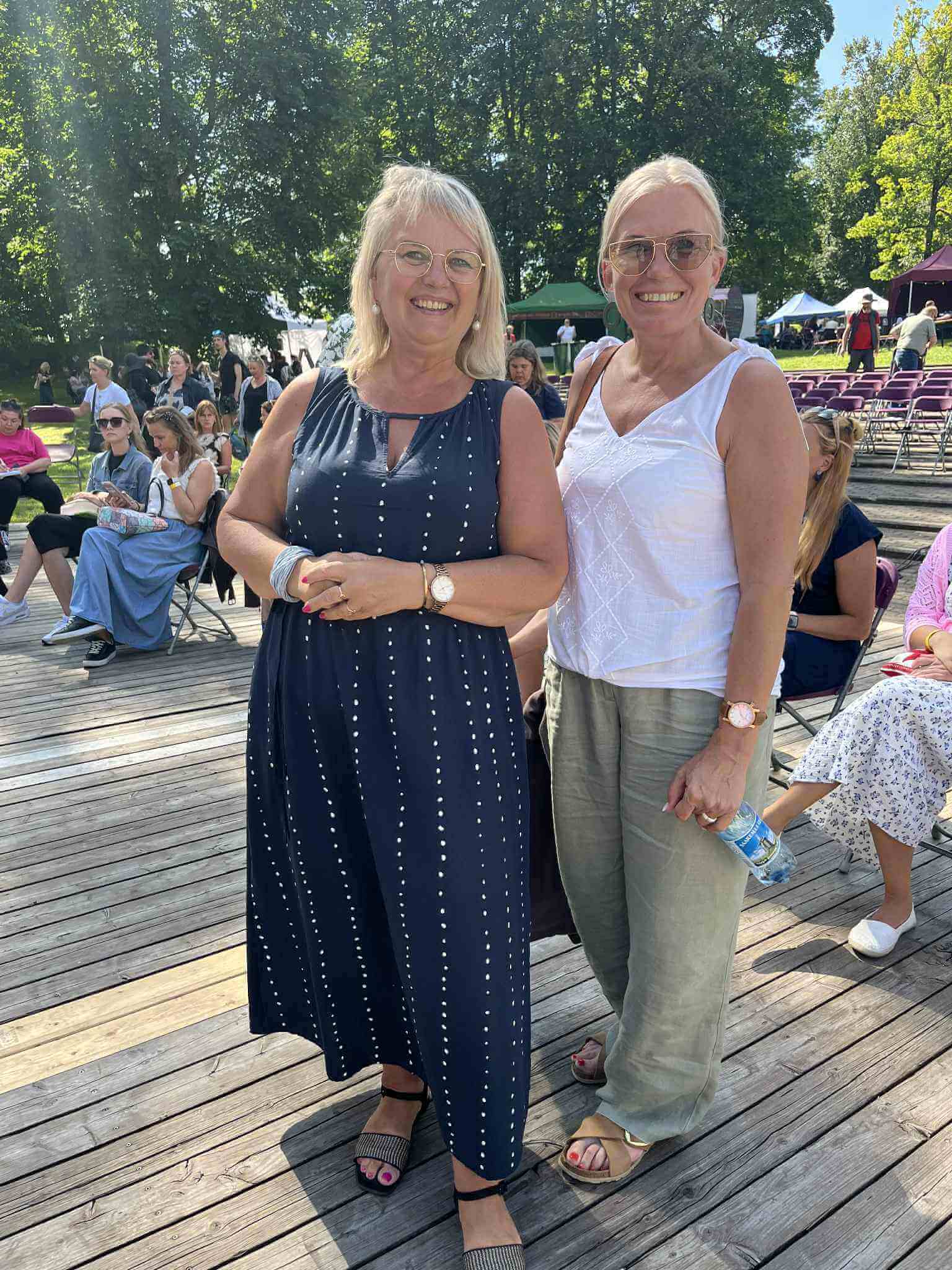
Evelin conducting a workshop on project-based learning at Haridustreff 2025. Pictured with Maila Rajamets.
Project-based learning is becoming more and more popular in Estonia. What is your assessment of its spread?
Indeed, project-based learning has been "discovered", but it is implemented in very different ways. I am also a member of the working group for creating project-based learning support materials, and this has shown that teachers need a unified understanding of the nature of project-based learning. It is not just an extended approach to a topic, but a comprehensive system that is based on the child, supports their interest and develops critical thinking, a sense of responsibility and cooperation skills.
It is not so important that everyone implements project-based learning, but that teaching methods correspond to the values of our curriculum. We can no longer teach with the methods of previous centuries. It is necessary to create conditions where the child can be an active participant and a developing thinker. The teacher is not the only source of knowledge. His role is to create an environment where learning can take place.
Do child-based approaches and project-based learning really prepare children for school, where the system is different?
Yes, this is a completely legitimate question. If a child experiences in kindergarten that their thoughts and ideas count, that learning is exciting and related to their interests, then they will develop an interest in learning – and this is the greatest gift with which to go to school. Yes, the school environment may be more structured, and not everything can always be done in the same child-centered way as in kindergarten, but our role is to prepare the child for life, not just for school.
We need to teach the child to learn how to ask, seek help, plan and analyze. This is what makes a child ready for school, not whether they can count to a hundred before school. The movement towards child-centered teaching is noticeable in schools. A general educational approach, pair lessons, active learning methods are increasingly used, research is conducted, fieldwork and trips are taken in authentic environments.
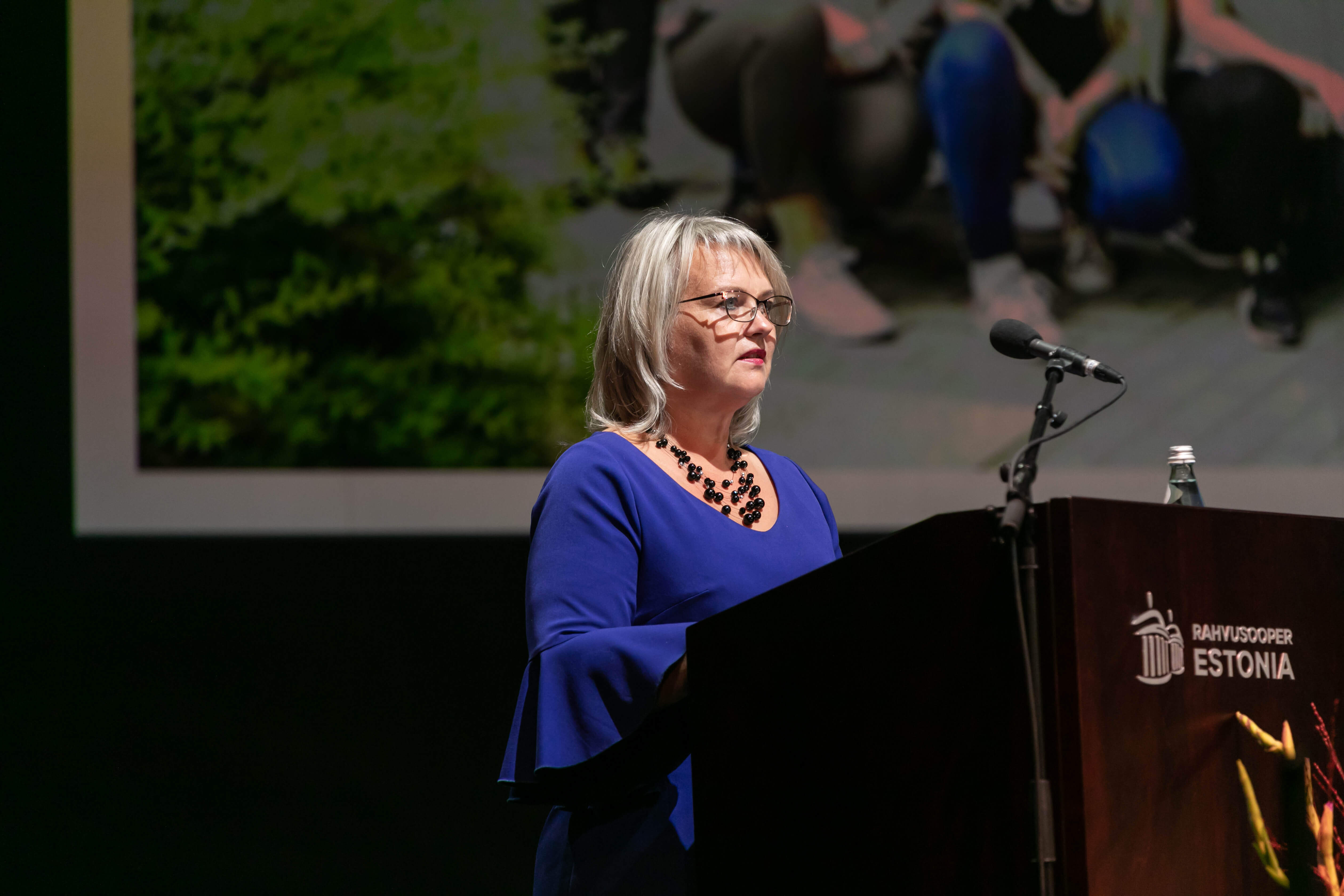
Does child-centered project learning implemented in kindergartens prepare children for a completely different school environment? Can children become disappointed in school?
Project learning is not the only way. This is simply a very systematic and well-functioning option with a clear structure. But there are also many other ways to support a child's development, even if projects are not made. It is important that teaching is truly based on the child's interests and developmental needs, and that the teacher supports a modern understanding of learning and their own role in this process. The teacher-based approach should be history.
The developmental peculiarity of a seven-year-old child is that he or she is increasingly beginning to understand responsibilities, he or she is able to do things that “have to” be done. It is this developmental leap that makes preparation for school possible. But there could also be more playfulness and flexibility in the first grade. This has been understood by both teachers and educational life organizers. Changes are moving, but slowly, because education is a very conservative field.
Are there any positive changes in the school system?
Yes, there are. Several schools have already switched to general education, which means that subject classes are no longer so fragmented. Instead, subjects are taught in an integrated way, based on topics that are interconnected. For example, when studying the Industrial Revolution, you can study how it influenced art, fashion and science.
This helps children make connections, learn more deeply and meaningfully. And such integrated teaching is not just a new trend, it is a natural development. We already have several success stories in Estonia, but these changes do not happen overnight.
How do you see the role of a teacher in changing education?
The role of a teacher is no longer to be an all-knowing lecturer. Today's teacher creates an environment where a child can act, experiment, investigate and learn through experience. Learning means a change in attitudes, knowledge, values, behaviour. And these changes occur through action, not just listening to a teacher's story.
We cannot "unteach" anyone. We can create conditions where a child can focus on learning themselves. If a child experiences in kindergarten that learning is cool and related to their life, then there is a high probability that they will be able to maintain this attitude at school. Of course, a lot depends on the school environment and the teacher, but the foundation has been laid.
Now let's talk a little about the Estonian Nursery Gardeners' Association and your journey to your current role. How did you end up as the chairwoman of the Estonian Nursery Gardeners' Association?
It all started with the fact that I wanted to belong to like-minded people. I became an ordinary member because I felt the need to belong to a network that truly understood the joys and worries of the education sector. Soon I was invited to be a regional representative and to the council of the association. Since I like challenges, I was willing to contribute. Over the years, I grew to become a member of the board and then chairwoman.
I have now been in this role for five years and I understand that it is no small responsibility. We do not only represent ourselves, but nearly 600 members across Estonia. Our task is to collect the views of our members, convey them to the state and be a reliable partner to the ministry and other educational associations and universities. This in turn means that our activities affect the working lives of all people working in the field of early childhood education. Also the happy childhood of 66,676 children attending kindergartens.
Why should a teacher join the Estonian Association of Kindergarten Teachers?
One of the goals of our association is to create a sense of connection and unity. We organize regional development days, share information, conduct discussions and summer seminars. These meetings offer support, inspiration and professional development. If you have questions or need advice – we are there.
Through us, the voice of teachers also reaches policymakers. For example, in 2017, we collected over 25,000 signatures, with which we initiated an appeal to the Riigikogu and which contributed to the establishment of a minimum salary for kindergarten teachers. Today, this is related to the salary of general education school teachers. This is an important guarantee that we have been working towards and will continue to stand for in the future.
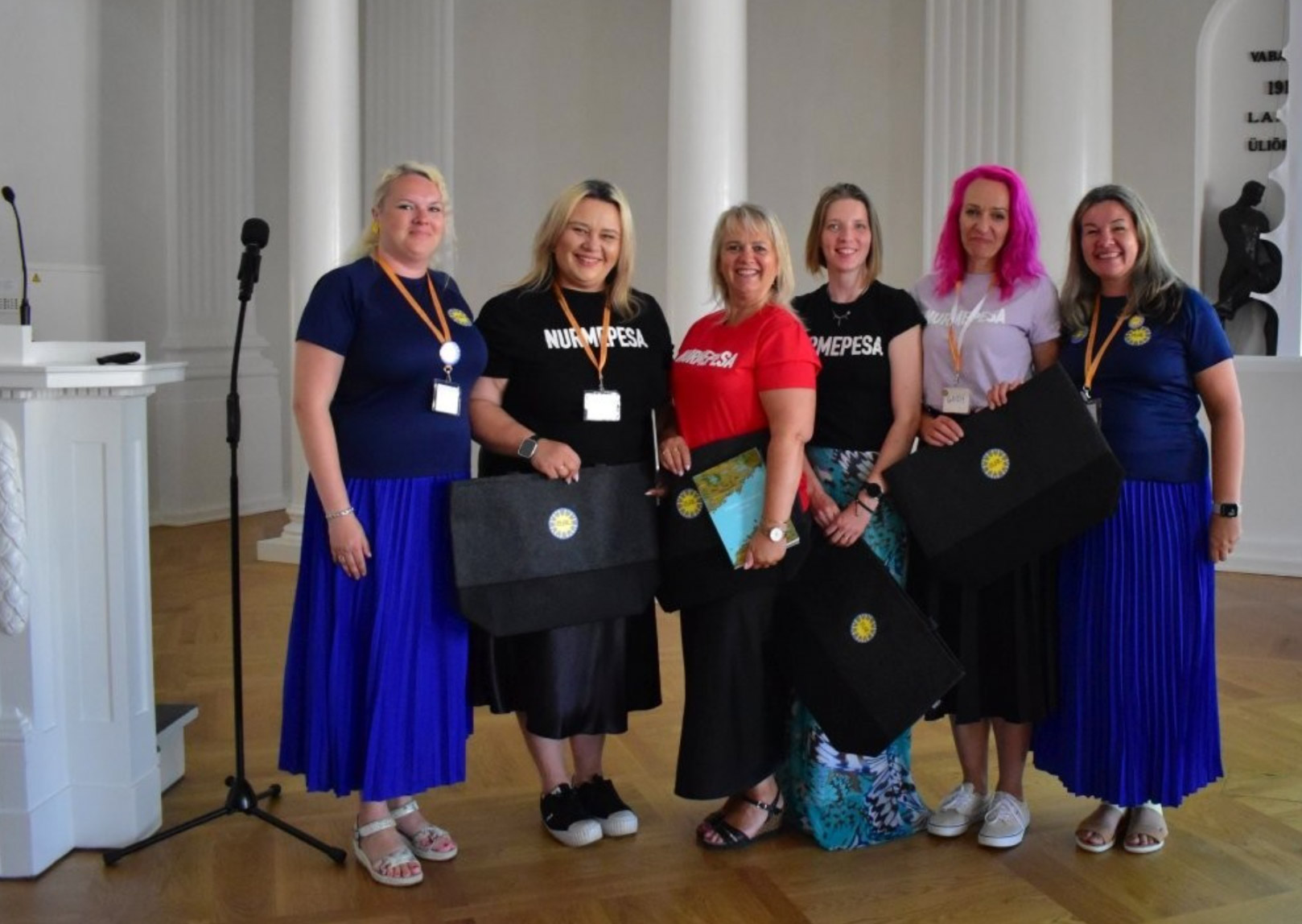
Nurmepesa teachers will share their journey to a child-centered approach at the ELAL summer seminar 2024.
We now have a new Early Childhood Education Act in force. What do you think are the strongest aspects of the new act?
A very important step was the transformation of childcare facilities into educational institutions. This increases the reliability of childcare facilities and also provides equal quality guarantees for children studying in smaller groups. All institutions will now also be included in a single register. This gives parents transparency and freedom of choice.
Another very positive change is that the job title of teacher assistants will change to assistant teacher, which will also be accompanied by clearer qualification requirements and job descriptions. This will also help to standardise the salary structure and clarify the role of employees.
Can the new law also create complexity?
Changes require time and adaptation. For example, teacher assistants who have not had secondary education so far may feel worried. But the law provides for a three-year transition period. This is more than enough to start studying, get a qualification and continue in their beloved job. Work experience and training also provide professional competencies that are valuable and are assessed by the kindergarten director.
How is support that meets the child's developmental needs regulated?
Support is now more clearly divided into three levels: general support, enhanced support and the need for special support. These concepts are now in line with the basic school and upper secondary school system. All this creates a smoother transition to school. Kindergartens can provide general support to children in a group as soon as the need arises, but the problem is rather the availability of specialists: speech therapists, special educators - there are simply not enough of them.
How will the transition to Estonian-language education develop?
This is not an easy process and many focus on the problems of Tallinn and Ida-Viru County. Our union members from Valga County, for example, are also concerned, because it is just as difficult there to find employees who speak Estonian and to provide an environment that reflects Estonian culture. The concern is real and needs more attention.
Are Estonian kindergartens ready to implement the new law?
I think that realistic conditions have been created for the implementation of the law. For example, a three-year transition period has been given to the qualification requirements for teacher assistants, and today several vocational education institutions offer very flexible opportunities - including for studying alongside work. Several teachers' assistants went to our kindergarten this year to acquire the profession of teacher assistant.
It is important to understand that self-improvement and professional development should be continuous, not just a legal obligation. There have been enormous developments in the field of educational science and psychology in the last decade. Brain science is constantly bringing us new knowledge that we need to be able to use in the educational environment. This is the teacher's responsibility.
Has the ministry's support in implementing the changes been sufficient?
The ministry has been inclusive and cooperative. At the same time, it must be said honestly that the changes must be implemented within the existing funding model, which has its limitations. Many changes, such as providing needs-based support to a child from the first moment of detection, are essentially correct and necessary, but their implementation requires training of teachers in inclusive education. Also resources – especially specialists, who are still too few.
How will tightening the qualification requirements for staff affect the sector's workforce?
On the one hand, it increases the value of the teaching profession and the credibility of kindergartens. On the other hand, it is known that the qualifications of kindergarten staff are related to the quality of education provided in kindergartens. With the support of the new law, it is possible to conclude a fixed-term contract for three years with students studying to become early childhood teachers. This should give a greater chance in the future that they will remain working in kindergartens after graduating from university. Among the people working as teaching assistants in kindergartens, there are also employees with basic education who are worried about their future. Three years of transition time is enough for these people to start acquiring secondary education. Many of them are dedicated to their work and just need support and encouragement to take that next step.
What will happen to directors who are required to have a master's degree?
This is a welcome change. There is a bottleneck here – there are not enough master's degree places, and they are shared between both teachers and directors. Many excellent leaders may remain “on the bench”, even though they do their job very well. Here we hope that in the future there will be more learning opportunities and that these people will be assessed based on their experience, not just formal qualifications. A transition period has been given in this regard as well.
Is a strike still a relevant opportunity for kindergartens to stand up for their rights?
Kindergarten teachers are aware of their rights and are ready to stand up for their and their colleagues' working conditions. They simply want to know what a strike will entail – will it affect their salary, what are the rights and obligations regarding strike days. The Estonian Union of Kindergarten Teachers is not a trade union, but a professional association, but we cooperate with EHL. Many changes, such as the minimum wage for teachers, have been the initiatives of our union.
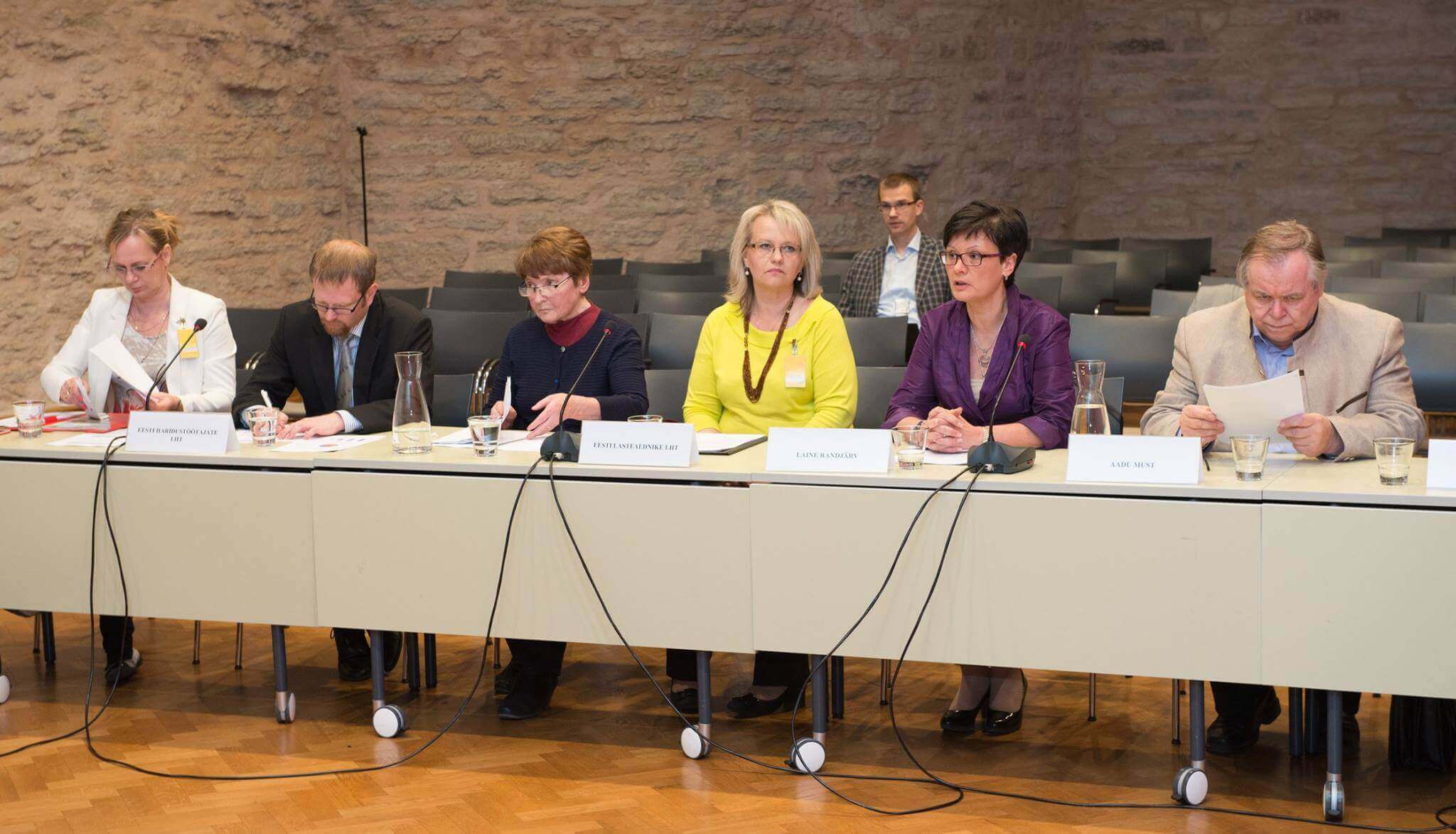
Representatives of ELAL and EHL in negotiations on establishing the minimum salary for early childhood education teachers at the Culture Committee meeting in 2019
What is your assessment of the so-called 2+1 and 1+2 teacher systems? Is one better than the other?
I would not put them on opposite sides of the scale. What is important is whether the system can ensure the quality of education. I see in practice that a group with two teachers creates better conditions for supporting children's development. At the same time, it is clear that the shortage of teachers, especially in certain regions or in groups opened in the middle of the school year, forces some municipalities to use the one-teacher system.
As for our kindergarten, the manager is of the opinion that two teachers would work in each group if possible. International studies show that the quality of early childhood education depends on the professional training of the staff.
What does the Finnish experience show?
Finland has been through this journey. My good colleague Anita Pakkanen, chairwoman of the Finnish Association of Kindergarten Teachers, expressed concern when she heard that Estonia was planning to use the one-teacher system more widely. Finland is moving back to the two-teacher model, because it is clear that teachers' workload and the quality of education suffer when there is only one teacher in a group. This is partly the reason for the teacher shortage in Finland.
Does teacher training support today's reality?
Unfortunately, the skills of team management are not taught enough in universities. If a teacher graduates from an early childhood education major and has to immediately start leading a team with one teacher in a group, that is a big challenge. Team management does not simply mean getting along well. It requires the ability to delegate, support, involve and take responsibility.
Many municipalities are merging kindergartens and creating so-called "house systems". What do you think about this?
We see very different examples. There are schools and kindergartens where several buildings are combined under one director. If the director is left alone, without a head teacher or support team, then communication with employees suffers first of all – and with it the entire management itself. It is difficult to manage people in education if you do not have time to talk to them or listen to them. We are not talking about just administration, but about substantive staff development work.
A director who has to travel between several buildings every day cannot be present – neither physically nor mentally. Yes, development or administrative directors have emerged in some places, but we must still remember: quality in education is born from relationships and cooperation, not Excel lines.
Why are these reforms being made? Is financial savings the only reason?
The honest answer is – we do not know. As far as we know, no public analysis has been presented on whether and how much financial savings these changes actually bring. We simply see that decisions are being made, often without broad-based discussion. Our wish is that any reforms should be based on the best interests of the child and the actual content of the teachers' work.
What could an Estonian kindergarten be like in 20 years?
We dream big, right? I really hope that in 20 years the teaching profession will not be taken over by robots or other artificial intelligence solutions. Education and the social sphere should remain areas where humanity is at the center.
Ideally, the kindergarten of the future would be a place where the child's voice is heard, their interests are taken into account, and a happy childhood is truly possible. I hope that all regions of Estonia will move along with the child-centered way of thinking - in some places more smoothly, in others it needs more support.
I believe and hope that in 20 years we will no longer look at Finland or Sweden with envy, but they will look at us instead. We already have a lot to share and learn from in kindergartens today.
And most importantly – that our kindergarten is staffed by people who truly love their job. That they are not there "because they can't do anything else", but because they want and are able to contribute to the development of children with all their heart and calling.
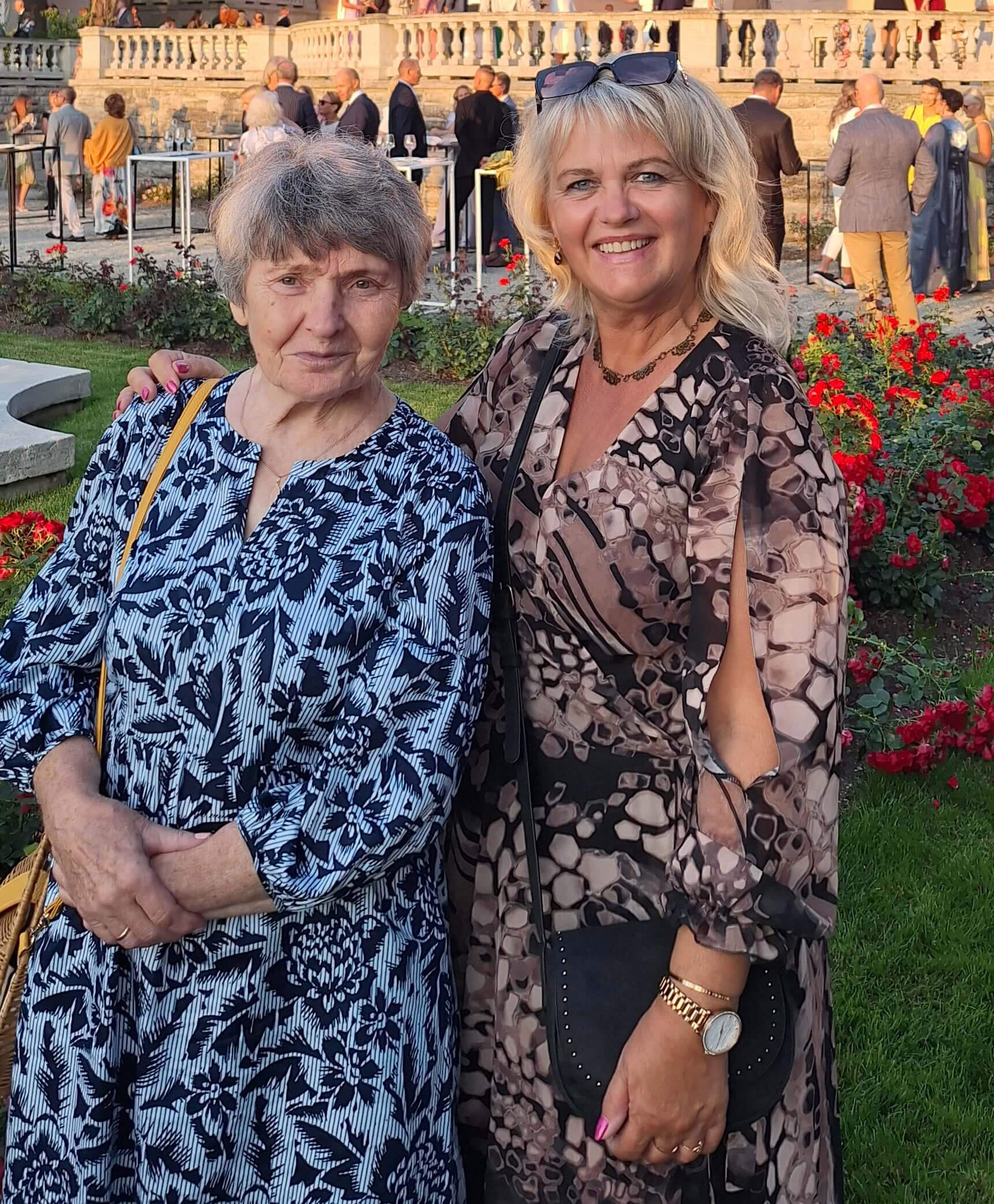
With ELAL founding member Liili Pill on the anniversary of Estonia's restoration of independence in Roosiaias.
Conclusion
The interview with Evelin Sarapuu opened the door to the current state and future perspectives of Estonian early childhood education – honestly, practically and with heart. The conviction that high-quality education can only be achieved through cooperation: between teachers, leaders, communities and the state was clearly heard. It also emerged that real changes do not happen overnight, but require continuous discussion, informed decisions and a willingness to adapt.
Evelin stressed that although there are many changes – from teacher qualification requirements to management models and work organization – the child should not be forgotten at the center of them. A happy and listened to child, a supported teacher and a sensibly managed educational institution together form the foundation on which the kindergarten of the future can be built.
As the chairwoman of the Estonian Association of Kindergarten Teachers, Evelin Sarapuu sees the impact of education policy decisions in real life every day. Her message is clear: implementing changes requires support and thoughtfulness, but even more so, the education sector needs people who act out of a calling. People like herself – a former music and classroom teacher turned early childhood education advocate.

